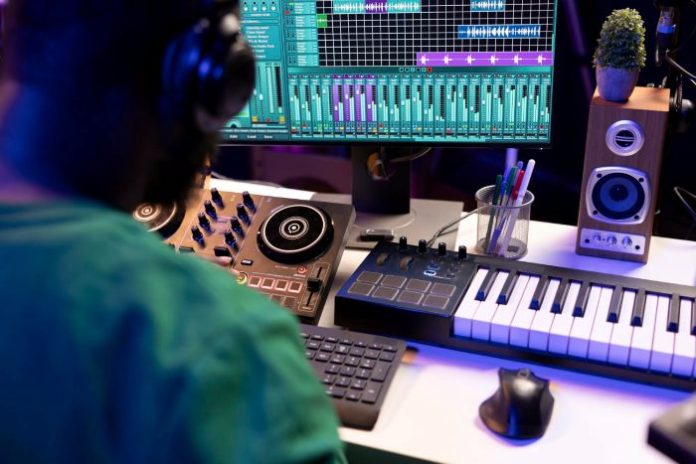In an era where new artists emerge daily, discovering fresh talent can feel like searching for a needle in a haystack. Fortunately, music analytics platforms are transforming how we identify and engage with new musicians. By harnessing data-driven insights, we can navigate the vast music landscape with more precision than ever before. But how exactly do these platforms work, and what benefits do they bring to both artists and music lovers? Let’s investigate the world of music analytics and uncover how they are reshaping the discovery process.
Key Takeaways
- Music analytics platforms help discover new artists using data-driven insights from streaming services and social media.
- These platforms track metrics such as streaming counts and engagement rates, providing actionable insights.
- Analytics can identify emerging talent and assist in making informed decisions about artist promotion.
- Successful case studies include artists like Billie Eilish and Lil Nas X, who utilized analytics for their rise to fame.
- The future of music discovery through analytics will likely involve advanced predictive models and metrics reflecting changing listener behaviors.
Table of contents
The Rise of Music Analytics
The explosion of digital music has created a wealth of opportunities and challenges for both emerging artists and industry professionals. With the proliferation of streaming services, compiled data like never before is available: platforms such as Spotify, Apple Music, and SoundCloud have revolutionized how we consume music. As listeners, we’re no longer confined to traditional radio stations or weekly charts. Instead, we can explore a virtually limitless catalogue of artists, each vying for our attention.
As industry insiders, we’ve witnessed the rise of music analytics as a pivotal tool in this evolving landscape. These platforms offer a data-centric approach to understanding audience preferences and trends, allowing labels, managers, and artists to make informed decisions based on real-time insights.
Understanding Music Analytics Platforms
At its core, a music analytics platform aggregates data derived from various sources, including streaming services, social media, and sales figures. These platforms track metrics such as streaming counts, geographical location of listeners, playlist placements, and engagement rates. This wealth of data turns into actionable insights that help us decode listener behavior in an increasingly crowded market.
Popular music analytics tools like Chartmetric, Soundcharts, and Next Big Sound allow stakeholders to create comprehensive profiles of artists, revealing not just who is currently trending but who has the potential for future success. Understanding these tools gives us a strategic advantage in identifying talent that may not yet be on everyone’s radar.
How Music Analytics Platforms Work
The mechanics behind music analytics platforms involve sophisticated data collection and analysis techniques. They pull data from APIs provided by streaming services and social media platforms, compiling it into comprehensive reports. For instance, let’s consider streaming statistics: millions of songs are played daily, and platforms analyze which tracks perform best in specific demographics and regions.
These platforms often utilize AI algorithms to predict future trends based on historical data. For example, if an artist shows a spike in streams and social media mentions, an analytics platform might flag them as a potential breakout star. This proactive approach allows us to stay ahead of trends and discover the next big thing before it becomes mainstream.
Benefits of Using Music Analytics for Artist Discovery
Using music analytics for artist discovery provides several significant benefits:
- Informed Decisions: By leveraging data insights, record labels and artist managers can make savvy decisions about which artists to sign or promote. This reduces the risk of investing in a talent that might not resonate with audiences.
- Identifying Emerging Talent: Analytics platforms can reveal artists gaining traction in niche markets, allowing us to discover hidden gems before they hit mainstream attention.
- Targeted Marketing: By understanding listener demographics and behavioral patterns, we can tailor marketing efforts to specific audiences, increasing engagement and conversion rates.
- Performance Tracking: By constantly monitoring an artist’s performance metrics, labels can adjust their strategies in real-time to maximize an artist’s reach and exposure.
- Evolving Strategies: Data insights can guide not just artist discovery but broader strategic shifts in how music is marketed and consumed, adapting to an ever-changing industry landscape.
Case Studies of Successful Artist Discoveries
Throughout recent years, numerous artists have benefited from the use of analytics in their rise to fame:
- Billie Eilish: Eilish’s ascent is a prime example of analytics in action. Her initial success stemmed from data-driven strategies facilitated through social media platforms and streaming services, which pinpointed her as a rising star among Gen Z listeners.
- Lil Nas X: The viral success of “Old Town Road” was heavily supported by analytics that tracked TikTok trends and audience engagement. This data not only propelled the song to Billboard chart success but also highlighted the power of social media analytics in artist discovery today.
- Tones and I: With her hit “Dance Monkey,” analytics captured the attention of listeners worldwide, showcasing how platforms can identify artists whose music connects deeply with audiences, irrespective of their initial reach.
The Future of Music Discovery Through Analytics
Looking forward, we anticipate that music analytics will only grow in importance as technology continues to evolve. The integration of machine learning and artificial intelligence will likely lead to even more sophisticated predictive models, helping identify trends before they become apparent to the wider industry.
Besides, as streaming services diversify their offerings, we can expect analytics platforms to adapt by incorporating new metrics that reflect changing listener behaviors, such as enhanced engagement through virtual concerts or social media interactions. The constant innovation in music consumption, including developments like augmented reality concerts or blockchain for music rights, will undoubtedly influence how artists are discovered and appreciated.
Conclusion
To conclude, music analytics platforms are revolutionizing how we discover new artists, providing us with unprecedented tools to understand audience preferences and behaviors. By embracing data-driven insights, we are better equipped to identify emerging talent and adapt to the ever-changing music landscape. As we move forward, it’s clear that the combination of music artistry and analytical prowess will pave the way for the next generation of musicians, reminding us that behind every successful artist are data points waiting to be explored.











